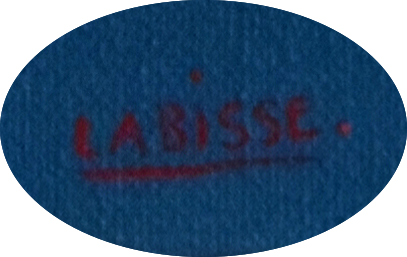

(Marchiennes, 1905 - Neuilly-sur-Seine, 1982)

Born in Marchiennes, a suburb of Douai, in 1905, Félix Labisse spent his childhood on the Belgian shores of the North Sea, his father having given up the flour mill for the fishing industry.
During his five years of study at the Ostend fishing school, he became acquainted with the artistic and literary milieu of Ostend. Encouraged by James Ensor, he decided at the age of 21 to devote himself to painting and spent some time in the studio of the 'Master of Ostend'. His first paintings, such as Les Flamands (1933) and Le Grand Carnaval ostendais (1936), were inspired by the Flemish cultural universe: grimacing peasants, cohorts of warriors and gnomes, masks on the move, all recall the world of Ensor and, beyond that, that of Bosch and Bruegel the Elder. The workmanship is already very smooth, the colours flamboyant.
At the same time, the young Labisse founded an avant-garde film club and made a surrealist film with Henri Storck, La Mort de Vénus (1928). From 1930 to 1933 he edited the magazine Tribord, which brought together writers from the Cahiers de la Flandre littéraire, illustrators such as Spilliaert, photographers and film-makers. Apollinaire, 'magician of modern mysteries, emperor of true words', and William Blake, whose 'proverbs from hell' Labisse recited, were celebrated. Under the influence of this milieu, which was close to the French surrealist circles and the Société du mystère - whose inspiration was Magritte in Brussels - Labisse retained a particular attraction for all forms of pagan culture: magic, witchcraft, occultism
Through multiple sources of inspiration, ancient mythology, esotericism, literary and pictorial history, Labisse was able to give his work corrosive accents to his creations where a certain sense of humour and an undisguised propensity for eroticism dominate.